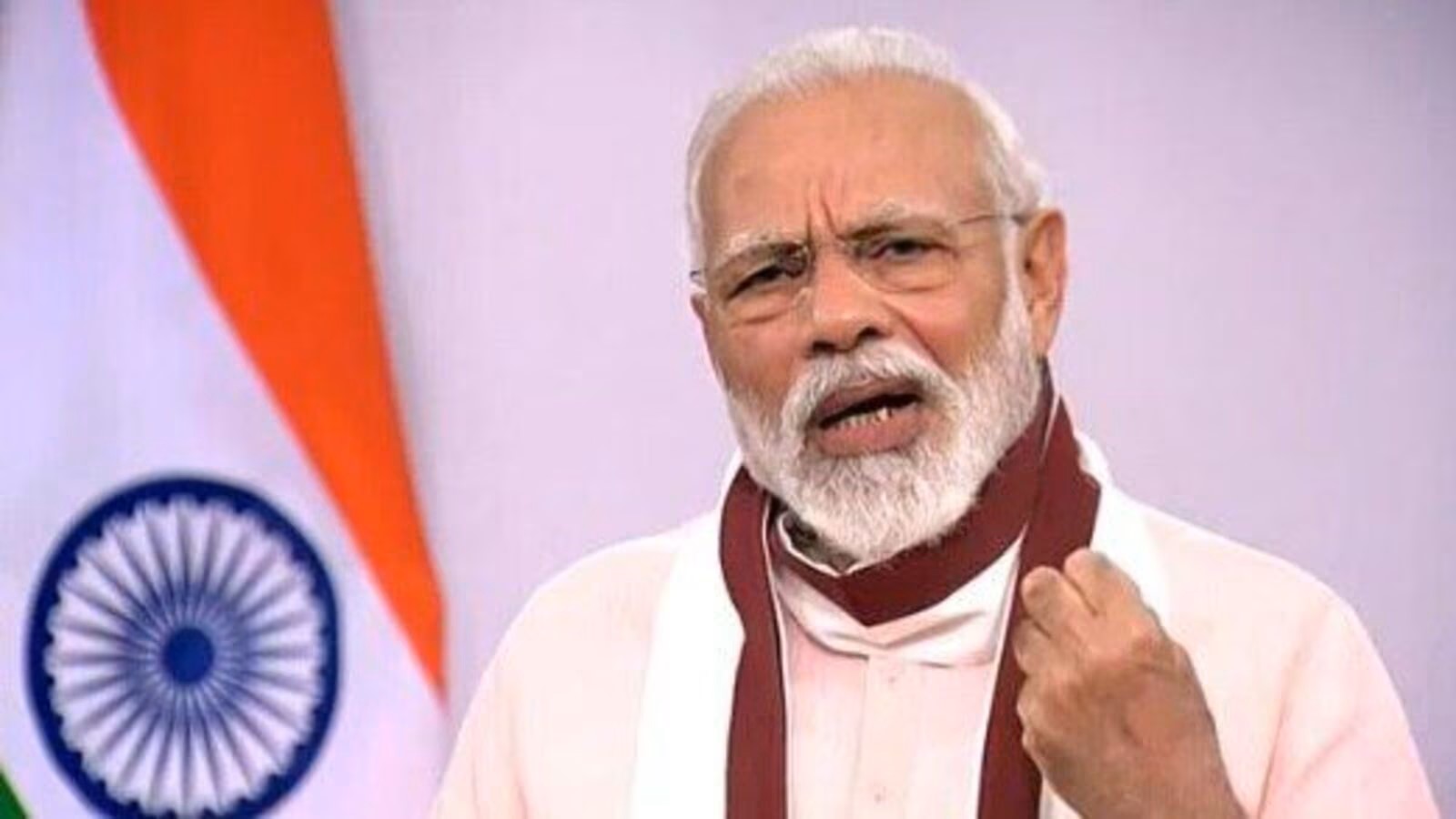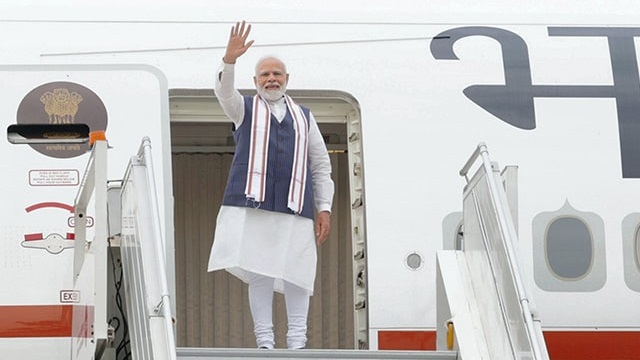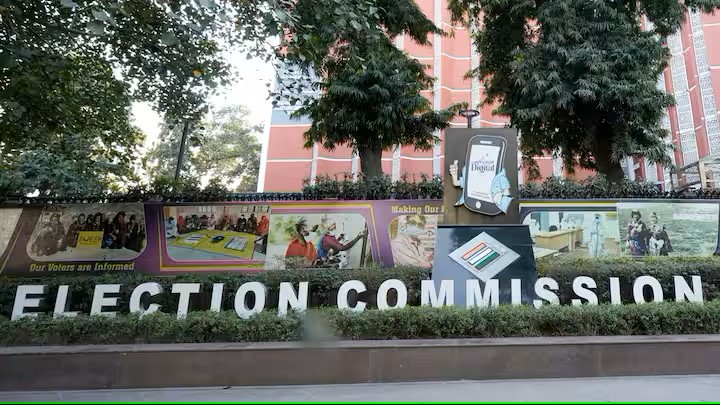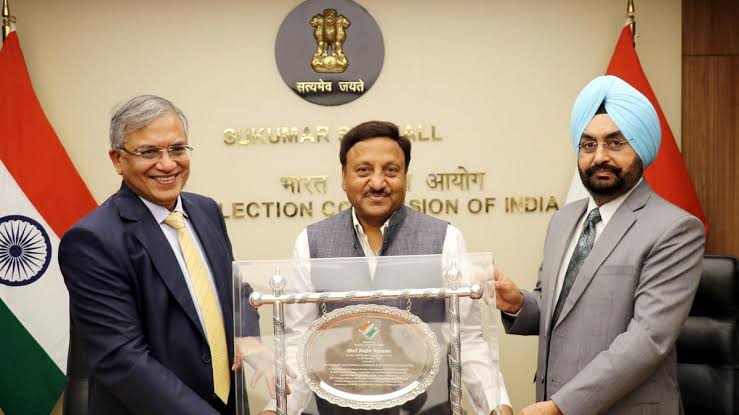Prime Minister Narendra Modi’s upcoming two-day visit to Gujarat and Uttar Pradesh, scheduled for February 22nd and 23rd, paints a vivid picture of a government actively weaving a tapestry of progress. Each thread, meticulously chosen, represents a vital step towards a brighter future for millions.
 The journey begins in Gujarat, where the threads of entrepreneurial spirit and agricultural strength resonate in the Golden Jubilee celebration of the Gujarat Cooperative Milk Marketing Federation (GCMMF). This launch sets the stage for a multi-faceted symphony of infrastructure projects, encompassing expressways, rail lines, water supply schemes, and internet connectivity initiatives. These advancements aim to bridge the urban-rural divide, fostering seamless accessibility and unlocking economic potential across the state.
The journey begins in Gujarat, where the threads of entrepreneurial spirit and agricultural strength resonate in the Golden Jubilee celebration of the Gujarat Cooperative Milk Marketing Federation (GCMMF). This launch sets the stage for a multi-faceted symphony of infrastructure projects, encompassing expressways, rail lines, water supply schemes, and internet connectivity initiatives. These advancements aim to bridge the urban-rural divide, fostering seamless accessibility and unlocking economic potential across the state.
But development stretches beyond mere bricks and mortar. Education and healthcare receive their due attention with the inauguration of new hospitals, medical colleges, and educational institutions. These investments represent a crucial chord in the symphony, empowering individuals with the tools necessary to contribute to the state’s prosperity and carve their destinies.
Tourism and spiritual development seamlessly blend into the melody with the beautification of Varanasi and the development of revered sites like the Rinchhadiya Mahadev Temple and Lake. These efforts not only enrich cultural heritage but also hold the potential to attract visitors, breathing new life into the local economy and fostering an appreciation for India’s vibrant tapestry of traditions.
On the industrial front, the launch of the PM Mega Integrated Textile Region and Apparel (PM MITRA) Park signifies a pivotal moment. This textile hub, coupled with other industrial ventures, holds the potential to create a multitude of job opportunities and propel the state’s manufacturing sector to even greater heights. It signifies a commitment to harnessing Gujarat’s industrial prowess and solidifying its position as a national leader in this crucial sector.
Finally, the dedication of two new Pressurised Heavy Water Reactors at the Kakrapar Atomic Power Station marks a momentous occasion in clean energy production. These reactors not only benefit Gujarat but also contribute to a greener future for multiple states, highlighting the government’s dedication to sustainable development and responsible resource management.
The Prime Minister’s focus then shifts to Varanasi, the ancient city on the banks of the Ganges. Here, a plethora of projects aims to transform the city’s landscape and empower its residents. Expressways and highway expansions promise smoother transportation, while the inauguration of an LPG bottling plant, milk processing unit, and other industrial ventures aim to stimulate economic activity and create job opportunities. These initiatives have the potential to uplift lives, fostering self-reliance and financial stability within the local communities.
Urban rejuvenation takes centre stage with upgraded water supply networks, waste management initiatives, and park redevelopment projects. These efforts not only enhance the quality of life for residents but also contribute to a cleaner and more aesthetically pleasing environment. A clean and vibrant Varanasi not only attracts tourists but also fosters a sense of pride and well-being among its residents.
Tourism flourishes with the launch of electric catamaran vessels and the beautification of pilgrimage routes. These initiatives cater to the growing tourist influx while ensuring a more sustainable and enjoyable experience. The focus on eco-friendly transportation options like electric catamarans demonstrates a commitment to responsible tourism that preserves the environment for future generations.
The textile sector receives a boost with the foundation stone laying of a National Institute of Fashion Technology, strengthening education and training infrastructure for the future generation of textile professionals. This signifies an investment in human capital, empowering individuals to acquire the skills necessary to succeed in the evolving textile industry and contribute to its continued growth.
Healthcare and education are not neglected. A new medical college and a National Centre of Ageing address critical needs, while scholarships and educational materials distribution empower students to pursue their dreams. These initiatives represent a vital investment in the future of Varanasi, ensuring that its residents have access to quality healthcare and educational opportunities, regardless of their socioeconomic background.
Finally, the inauguration of a new statue and development works at the Sant Guru Ravidas Janmasthali honours the cultural legacy of this revered figure, highlighting the government’s commitment to preserving and celebrating diversity. This recognition not only resonates with the local community but also sends a powerful message of inclusivity and respect for India’s rich cultural heritage.
This captivating journey encompasses more than just individual projects. It reflects a comprehensive symphony of progress, addressing diverse sectors and fostering holistic development. Improved connectivity, sustainable growth, cultural heritage preservation, and social upliftment – these are the harmonious notes that make up the melody of the Prime Minister’s agenda.




